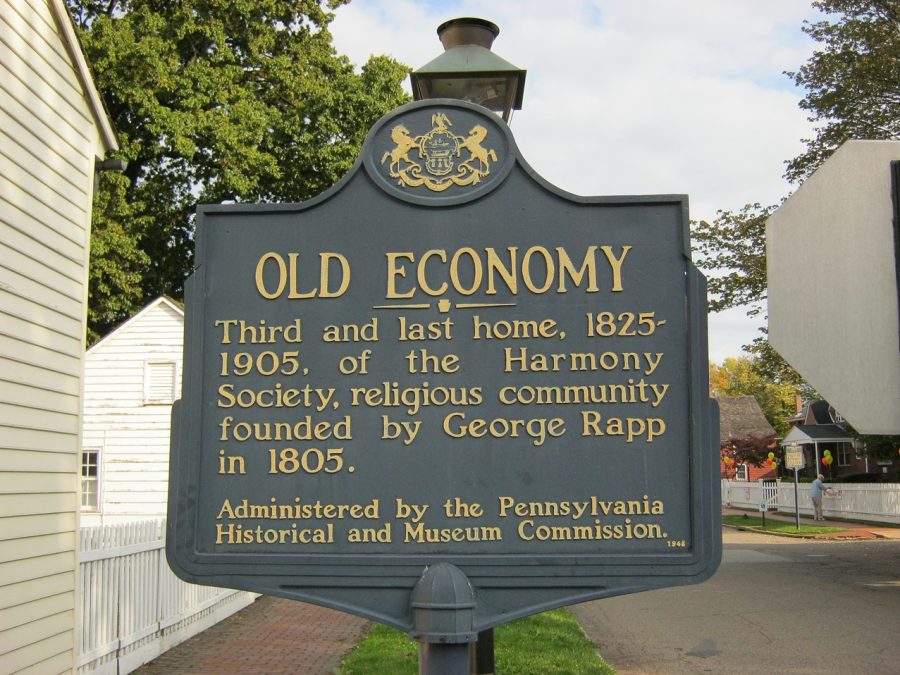Legacy of Harmonist Society
Taking time to read the signs across Beaver County can help one understand the impact that history left on the land and its people.
In the blistering heat of summer in 1804, you eagerly gather the 300 other travelers with you. Although you don’t know what is to come, you are hopeful for the best. After all, you are the leader of about 800 members belonging to a religion you established. Your name is Johann Georg Rapp.
Officially charged with subverting the teachings of the Lutheran Church, Rapp was put on trial for his differences with the church. He first started preaching to small crowds, but eventually got enough following to create a religious movement of several thousand people. This movement would make a lasting impact for many years to come.
Sidney Taylor of the Butler County Historical research project found that after challenging the Lutheran Church, Rapp looked to America in order to escape religious persecution. He first found the area of what is now Columbiana County, Ohio. He appealed to President Thomas Jefferson for a petition that addressed their reasons for their emigration to America, their concerns in that place where they live presently, and their purpose of purchasing a quantity of Land of the United States. However, Jefferson told Rapp that had to go to Congress. Congress turned him down, but Rapp did not let that slow him.
He ended up purchasing around 5,000 acres of land in Western Pennsylvania to grow his religious movement. In 1804, 300 of his members sailed to Baltimore, and later, 260 more followed suit to Philadelphia where they founded the town of Harmonie. The members of Harmonie, now known as Harmony, became known as the Harmonists.
The Harmonists adopted many unique ways of life. Most adopted the notion of celibacy to prepare themselves for the second coming of Christ, called the Millenium. Another idea was one that Jefferson encouraged for America’s future— the concept of the national economy thriving equally on the agriculture and manufacturing industry.
By 1809, the Harmonists had built a strong agricultural system and had many crops for harvest. According to the Old Economy Village Museum, soon after, in 1825, they covered Western Pennsylvania with textile factories, blacksmitheries, tanneries, carpentries and clothing and fabric manufacturers, strengthening the economy. They also built an inn, a brewery, stables, barns, a church, a school, houses and multiple mills of textiles and flour. The museum claimed that their factories across the country yielded a $32,000 annual net profit in 1831.
Not only did they build a strong economy, but the ideas of generosity, peacefulness, faith and community guided them in everyday life.
Due to commercial reasons and increasing land prices, the Harmonists had to relocate a couple of times. Eventually, they settled into Beaver County where they founded Economy. This opened the idea of new business ventures and prompted some members to leave the society and move to Beaver Falls to build and grow its industrial complex.
However, not long after, the powerful religious following that the Harmonists once had started to wane due to Rapp’s death in 1847.
In 1905, 58 years after the decline of members, the society was dissolved. Most of the land that they owned was sold to the American Bridge Company. Today, it is known as the town of Ambridge.
The Harmonist Society left a lasting impact on Beaver County, as well as the majority of Western Pennsylvania. They initiated the notion that agriculture and industry can coexist and prosper. Even though there are no remaining Harmonists, the religious and economic accomplishments that they achieved still stand today.



